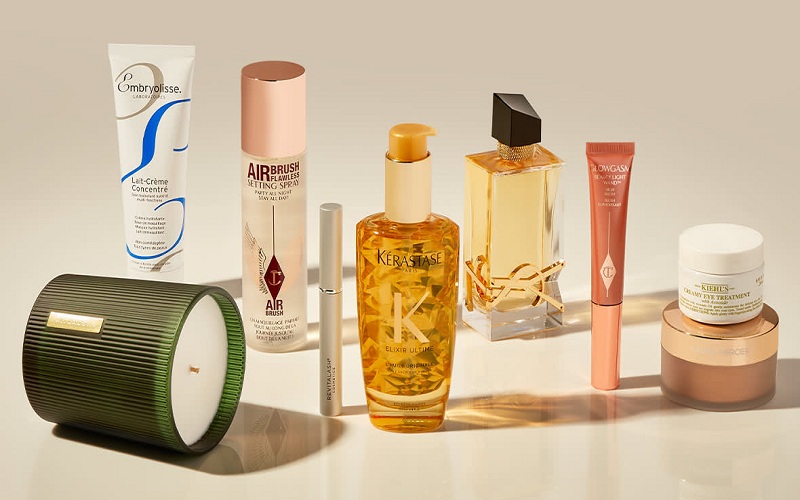Labels are a crucial element of product packaging, serving as a communication tool that conveys essential information, attracts consumer attention, and reinforces brand identity. When creating labels for any product, careful consideration of various factors is essential to ensure that the labels effectively fulfill their intended purpose and resonate with the target audience. From design elements to regulatory compliance and material selection, each aspect of white label cosmetics plays a vital role in the overall success of the label. In this comprehensive guide, we will explore 10 key things to consider while making labels for any product, providing valuable insights and practical tips to help you create labels that stand out, inform consumers, and contribute to the overall success of your product.
1. Brand Identity and Messaging
When creating labels for any product, the first and most crucial consideration is how well the labels reflect the brand’s identity and messaging. The labels should visually align with the brand’s established aesthetics, color palette, and overall tone to ensure a cohesive brand experience for consumers. Maintaining consistent branding across all product labels is essential, as it helps reinforce brand recognition and build trust with customers.
By aligning the label design with the brand’s visual identity, companies can effectively communicate their brand values, personality, and unique positioning. This consistency in branding not only makes the product more recognizable but also instills a sense of familiarity and reliability in the minds of consumers. When customers can easily associate the label with the brand, it strengthens their trust and loyalty, ultimately leading to increased engagement and sales. Prioritizing brand identity and messaging in the label design process is a strategic move that can significantly contribute to the overall success of the product.
2. Regulatory Compliance
Ensuring regulatory compliance is crucial when creating product labels. Different industries have specific regulations regarding label content, including ingredient lists, warnings, and usage instructions. It is essential to understand and adhere to these regulations to avoid legal issues and maintain consumer trust.
3. Target Audience
Consider your target audience when designing labels. Understanding their preferences, needs, and demographics can help you create labels that resonate with them. Tailoring the design, language, and imagery on the labels to appeal to your target audience can enhance consumer engagement and drive sales.
4. Label Size and Shape
The size and shape of your labels play a significant role in their visual appeal and practicality. Consider the size of your product packaging, shelf space, and information to be included on the label when determining the optimal size and shape. A well-proportioned label that fits seamlessly on the product can enhance its overall presentation.
5. Design Elements
The design elements of your labels, including typography, colors, graphics, and layout, should be carefully chosen to create a visually appealing and informative label. Consistent use of brand colors, legible fonts, and eye-catching graphics can help attract consumer attention and communicate key product information effectively.
6. Material Selection
Choosing the right label material is essential for durability, aesthetics, and functionality. Consider factors such as product environment, handling, and storage conditions when selecting label materials. Waterproof, UV-resistant, or eco-friendly materials may be necessary depending on the product and its intended use.
7. Printing Techniques
Selecting the appropriate printing techniques can enhance the visual appeal and quality of your labels. Options such as digital printing, offset printing, embossing, or foil stamping can add texture, shine, and depth to your labels. Choose printing techniques that complement your design and budget while maintaining print quality.
8. Information Hierarchy
Organizing information on beauty products labels in a clear and logical hierarchy is crucial for effective communication with consumers. By prioritizing essential information such as the product name, brand logo, ingredients, usage instructions, and warnings, brands can ensure that key details are prominently displayed and easily accessible to consumers. Utilizing font sizes, colors, and strategic placement helps guide consumers’ attention to critical information, making it stand out and facilitating quick comprehension.
For example, using larger font sizes for the product name and bold colors for warnings can draw immediate attention. This hierarchy of information not only enhances readability but also aids in creating a visually appealing label that effectively communicates important details, ultimately improving consumer understanding and engagement with the product.
9. Label Placement
The placement of labels on product packaging is crucial for maximizing visibility and impact. The front label should feature the product name and key selling points, as this is the first thing consumers will see and what will initially attract their attention. The back label, on the other hand, can include more detailed information such as ingredients and usage instructions.
Strategically positioning the labels is essential. The front label should be placed prominently, where it can easily catch the consumer’s eye, while the back label should be positioned in a way that provides easy access to the additional details. This layout ensures that the most important information is immediately visible, while still allowing consumers to find the detailed product information they need to make an informed purchase decision. By considering label placement in this way, brands can effectively communicate their key messaging and product details to maximize the impact on consumers.
10. Testing and Feedback
Before finalizing your lubricant label printing, conduct testing and gather feedback from target consumers, stakeholders, and industry experts. Testing can help identify any design flaws, readability issues, or regulatory compliance concerns. Incorporating feedback into the label design process can lead to improvements and ensure that your labels effectively communicate with consumers.
Creating effective labels for any product requires careful consideration of various factors, from brand identity and regulatory compliance to design elements and material selection. By taking into account these 10 key considerations while making labels, you can develop labels that not only attract consumer attention but also inform, engage, and contribute to the overall success of your product. Remember that labels are more than just a decorative element – they are a vital communication tool that can influence consumer perception, drive purchasing decisions, and strengthen brand loyalty. Embrace the art of label making with a strategic approach, attention to detail, and a focus on creating labels that resonate with your target audience and enhance the overall product experience.



